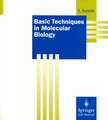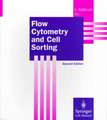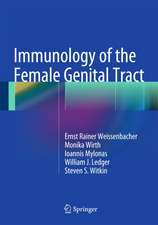Resin Microscopy and On-Section Immunocytochemistry: Springer Lab Manuals
Autor Geoffrey R. Newman, Jan A. Hoboten Limba Engleză Paperback – 23 aug 2014
| Toate formatele și edițiile | Preț | Express |
|---|---|---|
| Paperback (1) | 782.42 lei 38-45 zile | |
| Springer Berlin, Heidelberg – 23 aug 2014 | 782.42 lei 38-45 zile | |
| Hardback (1) | 1220.12 lei 6-8 săpt. | |
| Springer Berlin, Heidelberg – 10 apr 2001 | 1220.12 lei 6-8 săpt. |
Din seria Springer Lab Manuals
-
 Preț: 385.84 lei
Preț: 385.84 lei -
 Preț: 362.59 lei
Preț: 362.59 lei - 18%
 Preț: 973.69 lei
Preț: 973.69 lei - 15%
 Preț: 695.85 lei
Preț: 695.85 lei - 18%
 Preț: 997.40 lei
Preț: 997.40 lei -
 Preț: 385.84 lei
Preț: 385.84 lei -
 Preț: 382.18 lei
Preț: 382.18 lei - 24%
 Preț: 1045.08 lei
Preț: 1045.08 lei - 15%
 Preț: 641.20 lei
Preț: 641.20 lei - 18%
 Preț: 939.33 lei
Preț: 939.33 lei -
 Preț: 381.43 lei
Preț: 381.43 lei - 15%
 Preț: 637.59 lei
Preț: 637.59 lei - 15%
 Preț: 639.25 lei
Preț: 639.25 lei -
 Preț: 376.68 lei
Preț: 376.68 lei - 18%
 Preț: 1822.40 lei
Preț: 1822.40 lei - 18%
 Preț: 953.82 lei
Preț: 953.82 lei - 15%
 Preț: 645.14 lei
Preț: 645.14 lei - 15%
 Preț: 689.93 lei
Preț: 689.93 lei - 23%
 Preț: 821.58 lei
Preț: 821.58 lei - 19%
 Preț: 588.70 lei
Preț: 588.70 lei - 5%
 Preț: 727.44 lei
Preț: 727.44 lei - 18%
 Preț: 1225.31 lei
Preț: 1225.31 lei - 15%
 Preț: 657.39 lei
Preț: 657.39 lei - 18%
 Preț: 949.73 lei
Preț: 949.73 lei -
 Preț: 386.99 lei
Preț: 386.99 lei - 15%
 Preț: 657.25 lei
Preț: 657.25 lei - 19%
 Preț: 555.62 lei
Preț: 555.62 lei -
 Preț: 380.63 lei
Preț: 380.63 lei - 18%
 Preț: 1226.11 lei
Preț: 1226.11 lei - 15%
 Preț: 649.22 lei
Preț: 649.22 lei - 15%
 Preț: 632.55 lei
Preț: 632.55 lei - 19%
 Preț: 584.76 lei
Preț: 584.76 lei - 15%
 Preț: 639.41 lei
Preț: 639.41 lei - 15%
 Preț: 644.82 lei
Preț: 644.82 lei -
 Preț: 390.25 lei
Preț: 390.25 lei - 18%
 Preț: 781.31 lei
Preț: 781.31 lei - 15%
 Preț: 644.63 lei
Preț: 644.63 lei -
 Preț: 382.36 lei
Preț: 382.36 lei -
 Preț: 363.12 lei
Preț: 363.12 lei - 18%
 Preț: 961.23 lei
Preț: 961.23 lei -
 Preț: 416.29 lei
Preț: 416.29 lei - 18%
 Preț: 783.35 lei
Preț: 783.35 lei - 18%
 Preț: 791.88 lei
Preț: 791.88 lei - 15%
 Preț: 675.22 lei
Preț: 675.22 lei - 23%
 Preț: 1311.54 lei
Preț: 1311.54 lei -
 Preț: 381.43 lei
Preț: 381.43 lei
Preț: 782.42 lei
Preț vechi: 1016.13 lei
-23% Nou
Puncte Express: 1174
Preț estimativ în valută:
149.71€ • 156.31$ • 123.91£
149.71€ • 156.31$ • 123.91£
Carte tipărită la comandă
Livrare economică 31 martie-07 aprilie
Preluare comenzi: 021 569.72.76
Specificații
ISBN-13: 9783642477317
ISBN-10: 3642477313
Pagini: 296
Ilustrații: XIX, 273 p.
Dimensiuni: 193 x 242 x 16 mm
Ediția:2nd ed. 2001
Editura: Springer Berlin, Heidelberg
Colecția Springer
Seria Springer Lab Manuals
Locul publicării:Berlin, Heidelberg, Germany
ISBN-10: 3642477313
Pagini: 296
Ilustrații: XIX, 273 p.
Dimensiuni: 193 x 242 x 16 mm
Ediția:2nd ed. 2001
Editura: Springer Berlin, Heidelberg
Colecția Springer
Seria Springer Lab Manuals
Locul publicării:Berlin, Heidelberg, Germany
Public țintă
Professional/practitionerCuprins
I: Resin Embedding.- 1 The Strategic Approach.- 2 The Resins.- 3 Resin Embedding Protocols for Chemically Fixed Tissue.- 4 Cryotechniques.- 5 Methods for Resin Polymerisation.- 6 Handling Resin Blocks.- II: On-Section Immunolabelling.- 7 Strategies in Immunolabelling.- 8 General Considerations.- 9 Immunolabelling Protocols for Resin Sections.- 10 Resin Embedding and Immunolabelling.- Appendix I Examples of Typical Resin Embedding Regimes for Immunocytochemistry.- I.1 Solid Tissue, Pellets and Agar Blocks — Immersion Fixation.- I.2 Solid Tissue — Light Perfusion Fixation.- I.3 Solid Tissue — Very Light Perfusion Fixation.- I.4 Cryosubstitution.- I.5 Project Planner.- Appendix II List of Suppliers.- EM General.- EM Apparatus.- Electron Microscopes.- Flow Cytometry.- References.
Recenzii
From the reviews of the second edition:
"This comprehensive and valuable book is a must-have for the immunohistochemical laboratory. It extensively covers the field of onsection immunocytochemistry, including epoxy and acrylic resins, a variety of embedding and immunolabelling protocols … . It is the only book I know covering LR-White and -Gold, the different Lowicryls, and Unicryl in this comprehensive manner. … it is a very helpful book and because of its extensive theoretical and practical reference a standard for the beginner as well as those already familiar with immunocytochemistry." (Jens Krieger, Microscopy and Analysis, September, 2002)
"This comprehensive and valuable book is a must-have for the immunohistochemical laboratory. It extensively covers the field of onsection immunocytochemistry, including epoxy and acrylic resins, a variety of embedding and immunolabelling protocols … . It is the only book I know covering LR-White and -Gold, the different Lowicryls, and Unicryl in this comprehensive manner. … it is a very helpful book and because of its extensive theoretical and practical reference a standard for the beginner as well as those already familiar with immunocytochemistry." (Jens Krieger, Microscopy and Analysis, September, 2002)
Textul de pe ultima copertă
Since antibodies tagged with markers have been developed, immunocytochemistry has become the method of choice for identifying tissue substances or for the localisation of nucleic acid in tissue by in situ hybridisation in molecular biology. Resin-embedded tissue is routinely used and new techniques are constantly introduced. Thus, the novice entering these fields has a breathtaking variety of methods open to him. This laboratory book covers the embedding of tissue using less sensitive epoxy resin methods to the more sensitive procedures employing the acrylics. The possibilities are discussed and results are presented so that an understanding of the techniques can be acquired and appropriate choices made.
In the first part of the book, the background of the various resins available are discussed and information on inexpensive alternative technologies where they exist is provided. The various steps involved in tissue processing, beginning with fixation, are first described in theory, then detailed protocols are presented for their application, including troubleshooting sections. The second part rationalises the great variety of labelling methods that are commonly used for "on-section" cytochemistry and immunocytochemistry, where colloidal gold is currently overwhelmingly the most popular marker. The principles behind the usage of various markers and their limitations and advantages are discussed.
In the first part of the book, the background of the various resins available are discussed and information on inexpensive alternative technologies where they exist is provided. The various steps involved in tissue processing, beginning with fixation, are first described in theory, then detailed protocols are presented for their application, including troubleshooting sections. The second part rationalises the great variety of labelling methods that are commonly used for "on-section" cytochemistry and immunocytochemistry, where colloidal gold is currently overwhelmingly the most popular marker. The principles behind the usage of various markers and their limitations and advantages are discussed.
Caracteristici
Ready-to-go protocols Explains all steps from fixation to labelling and detection Helps in finding the resin of choice for your needs









